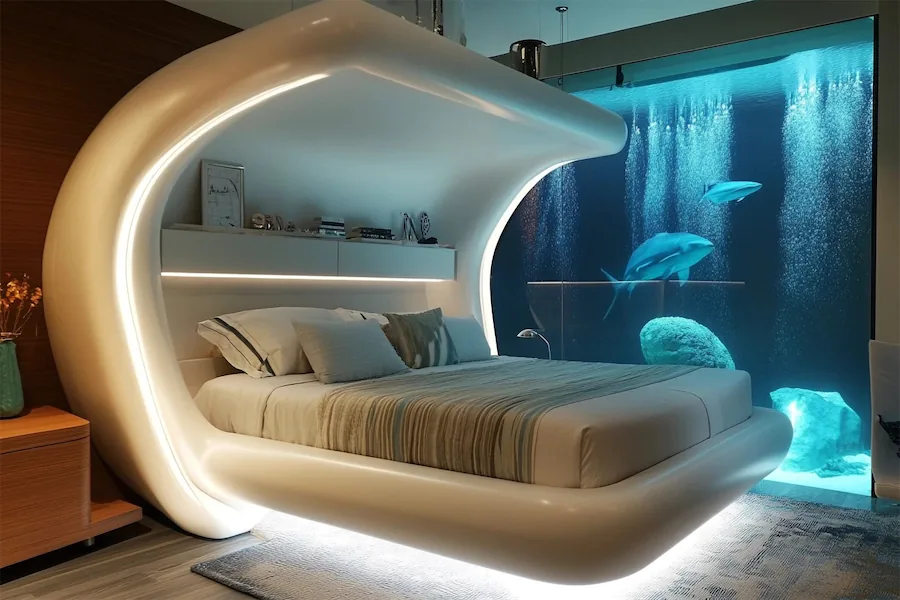A smart bedroom integrates advanced technologies to enhance comfort, convenience, and sleep quality. This article explores the evolution, key features, applications, and considerations of smart bedrooms.
Introduction to Smart Bedrooms
Smart bedrooms utilize interconnected devices and systems to create a responsive environment tailored to individual needs. By automating functions like lighting, climate control, and entertainment, these spaces aim to improve relaxation and restfulness.
History and Origins of Smart Bedrooms
The concept of smart bedrooms emerged alongside advancements in home automation and the Internet of Things (IoT). Early innovations focused on integrating simple remote controls for lighting and temperature. As technology progressed, more sophisticated systems were developed, allowing for comprehensive automation and personalization within the bedroom environment.
Key Features of Smart Bedrooms
- Smart Lighting: Adjustable lighting systems that can be controlled via voice commands or smartphone apps, allowing users to set the ambiance and support circadian rhythms.
- Automated Climate Control: Systems that maintain optimal room temperatures by learning user preferences and adjusting settings accordingly.
- Smart Beds and Mattresses: Beds equipped with sensors to monitor sleep patterns, adjust firmness, and even self-make, enhancing sleep quality and convenience.
- Voice-Activated Assistants: Devices like Amazon Alexa or Google Assistant that control various bedroom functions, from playing music to managing connected appliances.
- Integrated Entertainment Systems: Seamless access to music, television, and other media through smart TVs or connected speakers, often controlled via voice or mobile apps.
Applications of Smart Bedrooms
- Sleep Enhancement: Utilizing smart mattresses and lighting to promote better sleep hygiene and monitor health metrics.
- Energy Efficiency: Automating lighting and climate control to reduce energy consumption by ensuring devices operate only when needed.
- Accessibility: Assisting individuals with mobility challenges by automating tasks like adjusting blinds, controlling lights, or managing entertainment systems through voice commands.
Considerations When Choosing Smart Bedroom Features
- Compatibility: Ensuring that all devices and systems can communicate effectively, preferably through a centralized hub or platform.
- Privacy and Security: Protecting personal data collected by smart devices, such as sleep patterns or voice recordings, from unauthorized access.
- User-Friendliness: Selecting devices with intuitive interfaces and reliable customer support to facilitate easy setup and operation.
- Cost: Considering the investment required for smart technology and weighing it against the potential benefits and convenience offered.
Conclusion
Smart bedrooms represent the convergence of technology and personal space, offering tailored environments that enhance comfort and well-being. By thoughtfully selecting and integrating smart features, individuals can create a bedroom that not only meets their functional needs but also contributes to a restful and rejuvenating experience.
